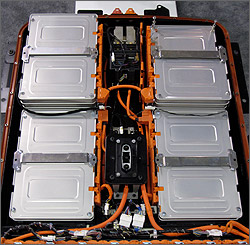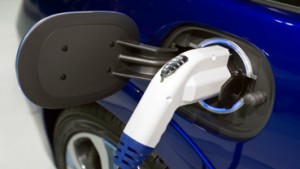
Breakthrough Technologies for Our Long-Term Energy Challenges
Basic and early research is critical for developing the breakthrough technologies of the future, and this research is essential for solving our long-term energy challenges. However, many speculative energy projects are simply too risky for investors, so the U.S. created a new type of research organization in 2007 to explore the vast potential of these future technologies. The Advanced Research Projects Agency-Energy (ARPA-E) receives an annual budget of $250 million and has invested over $770 million into 275 projects over the last five years.
In a NPR interview last week, host Ira Flatow discussed several future energy technologies with ARPA-E deputy director Cheryl Martin. During the interview, Martin discussed projects including lithium air batteries and magnetic flywheels.
While lithium air batteries are not a new technology, ARPA-E proposes solutions to several of the challenges lithium faces. Lithium is cheap, abundant, and has a high energy density, but as the battery works, parts begin to dissolve. By replacing these dissolving liquid electrolytes with new solid electrolytes, ARPA-E intends to create stronger and more resilient lithium batteries.
Most modern electric vehicles (EVs) run on Lithium-ion batteries. In order to compete with gasoline, the best lithium-ion battery would need to store two times more energy at 30% of the cost. These new lithium-air batteries will store up to three times more energy than lithium-ion batteries and will allow EVs to travel up to 350 miles on a single charge.
Secondly, Martin discussed improvements to flywheel technologies. Our current electrical grid cannot store excess energy adequately, so plants over-generate in order to ensure a reliable supply. Flywheels offer a method of storing energy for future grid-use at any location, thus cutting the need for energy over-production.
By changing to composite materials and creating thinner, more resilient wheels, ARPA-E and Boeing intend to revolutionize flywheel design by levitating and spinning the flywheels with strong magnets. Such a design would allow the flywheels to deliver 400% more energy than standard flywheels, and it would increase the availability and reliability of wind and solar power.
 Later in the NPR interview, Harvard Professor Jennifer Lewis discussed her micro-battery project sponsored by the Department of Energy. Lewis’ group plans to push the limits of 3-D printing with these tiny batteries that are 1,000 times smaller than any commercial rechargeable lithium-ion battery. These batteries will be able to store energy in autonomous sensor arrays for solar panels and other environmental sensor platforms.
Later in the NPR interview, Harvard Professor Jennifer Lewis discussed her micro-battery project sponsored by the Department of Energy. Lewis’ group plans to push the limits of 3-D printing with these tiny batteries that are 1,000 times smaller than any commercial rechargeable lithium-ion battery. These batteries will be able to store energy in autonomous sensor arrays for solar panels and other environmental sensor platforms.
All of these projects demonstrate a growing interest in battery technologies for renewable energy resources. Even though most renewable energy forms are far from achieving cost-competitiveness with fossil fuels, government involvement through funding and research will allow forward-thinking scientists to overcome our current obstacles.






[…] Breakthrough Technologies for Our Long-term Energy Challenges William Joyce […]
[…] to develop the real game-changing technologies that could really alter the trajectory of emissions. ARPA-E has been funding the sort of incremental gains that the private sector would be funding […]